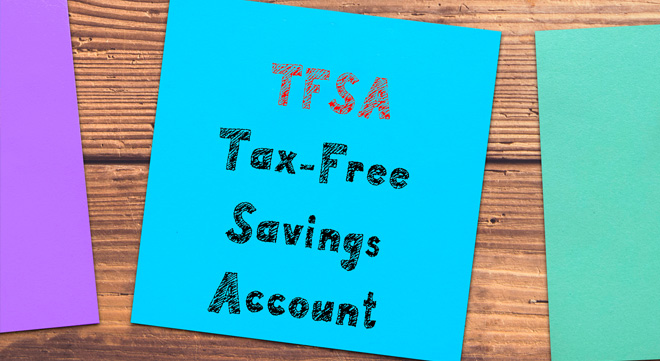Investors have until 28 February to make use of their annual tax-free investment allowance of R36 000 in the 2022/23 tax year.
You are not liable for any capital gains tax or income tax on the dividends and interest earned by your investment within a tax-free savings account (TFSA). But there are limits on how much you can contribute to a TFSA in a tax year (R36 000), or over your lifetime (R500 000).
Coronation Fund Managers says investors should take advantage of their annual tax-free investment allowance as early as possible. Doing this allows the taxes you save to remain invested for the long term, so you can reap the benefits of compound growth over the longest possible period.
“What makes a tax-free investment so much more powerful than an investment in a taxable unit trust is that the compound growth on your tax-free investment is higher. Over the longest possible period, this can double the value of your investment nest egg,” Coronation says.
To illustrate this point, imagine that you invest the maximum annual amount (R36 000) in a tax-free investment for your child from birth. If you continue doing this each year, you will reach the lifetime limit of R500 000 before your child turns 14.
According to Coronation, based on certain assumptions, if you keep the money in the tax-free investment until your child turns 18, the value of the tax-free investment will be 22% greater than the equivalent taxable unit trust investment. By age 30, this difference widens to 42%, and by age 65, the investment would be more than double the value of the same taxable unit trust investment.
Coronation’s analysis is based on the following assumptions:
- R36 000 is invested in a tax-free investment and a taxable investment (normal unit trust) from birth until the TFSA lifetime limit of R500 000 is reached when the child is about 14.
- The investment grows in both products until the child turns 65.
- The end values assume a real return of 6% a year.
The example shows that by resisting the temptation to disinvest from a tax-free investment, the nest egg will enable your child to finance their tertiary education, buy a first home or, ideally, invest in their retirement, depending on when your child decides to disinvest.
Coronation says this theoretical exercise also shows the power of compounding over long periods. For example, investing R500 000 spread out over 14 years and then doing nothing for 41 years can result in an investment worth R17 million in today’s money by age 65. This is enough to fund a retirement income for life of more than R80 000 a month, again in today’s money.
This hypothetical tax-free investment beneficiary would therefore never have to contribute to a retirement fund while working, effectively freeing up 10% to 15% of his or her annual income that would normally have been required to fund retirement income, assuming contributions are made from one’s 20s, Coronation says.
Top-ups don’t count
Another reason for remaining invested in a tax-free investment for as long as possible is that you cannot top up the fund again. The South African Revenue Service (Sars) considers only the amounts invested and disregards any withdrawals when determining your tax-free investment limits. For example, if you saved R100 000 in your tax-free product, and you withdrew the full amount, your total remaining lifetime contribution is limited to R400 000.
If you have the financial means, you should contribute the maximum of R36 000 a year. This because you forfeit any portion of the annual limit that you do not use – it is not carried forward to the following tax year. For example, if you invest R30 000 before February 28 this year, the unused portion of R6 000 cannot be rolled over and used to contribute more than R36 000 in the 2023/24 tax year.
You can have more than one tax-free investment product. However, the annual and lifetime limits are aggregated across all your tax-free products.
Beware of the penalty
On that note, Sars levies a stiff penalty of 40% on contributions to your tax-free investments that exceed the annual limit. For example, if you contribute R40 000, Sars will apply a penalty of 40% to the amount (R4 000) that exceeds R36 000. The penalty of R1 600 will be added to the normal tax payable on the notice of assessment.
Remember, the capitalisation of returns within the TFSA does not affect the annual or lifetime limits. For example, if you invested R36 000 in the 2022 tax year and the return on investment was interest of R3 000, which is capitalised, the total amount in the account will be R39 000. The interest of R3 000 is not regarded as a contribution.
Disclaimer: This article is published for informational purposes only and does not constitute financial advice. Past performance is not a guarantee of future returns.





This article would be more complete with an analysis of the benefits of making a similar contribution to a Retirement Annuity. Firstly, there is, in effect, no limit to the contribution to a Retirement Annuity. The Tax-free plan invariably only gives rise to amounts of realised Capital Gains and interest exemptions that are already available through ordinary annual exemptions and allowances. Secondly, dependent on the tax circumstances of the beneficiary, there would be a deduction available. Generally speaking the first step would be to investigate the amount to be paid into an RA and only after that is rejected or maximised should one consider a tax-free savings plan